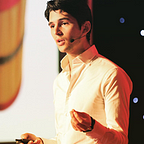What’s the future of community?
Humans have organized in communities for thousands of years, but somehow we have departed from this idea for the last few decades, especially in business. We’ve gotten used to brands broadcasting aspirational images to us as passive consumers. We have adopted these brands as symbols within our own communities — be it the handbag with Louis Vuitton logos plastered all over or the t-shirt with an oversized Ralph Laurent emblem. Is this a new phenomenon?
Community across history
For millennia we’ve borrowed symbols to denote our affiliation but for most of our history, the symbols and affiliations were rather local. It’s easy to forget that the empires from antiquity and even the middle ages existed only in the minds of a few folks, while a majority of the population lived humble lives largely unaware they were ‘part of an empire’ until an army came around and forced them to do something. And it was not until the 19th century that Nation States consolidate through state-mandated education, mass literacy, and mass media. Adopting and identifying with far-removed symbols is only a recent phenomenon.
A new era for communities starts in the 1960s with the collapse of kinship networks. In the space of 1 or 2 generations, we go from having an average of 80 relatives or relatives-in-law to about 12. The radical reduction in the size of kinship networks means we transition from forced communities (we don’t choose our family) to one of willful associations (we choose our friends). This transformation leads to an explosion in subcultures, as people seek to mark their affiliation to certain groups and not others. We then see a rapid succession of countercultural movements that resist the mainstream by becoming producers of their own symbols: Hippies and Rock cultures of the 60s and 70s, Punk and Glam Metal in the 80s, are but a few (European) examples of how groups created communities by appropriating the means of cultural production.
The next transition for community begins during the 1990s and explodes in the late 2000s with the internet and social media. Our ability to choose who we affiliate with is now unbound to geography. And as with previous transitions, this led to a new wave of subcultures inventing symbols and rituals. Who over time became more standardized and even commoditized.
(\_/)
\(=’’=)/ => 🙂
(“)(“)
This brings us to our current era of community, where the spread of AI is opening the doors for mass personalization and enabling a new creative explosion.
As technology has advanced, we’ve seen the rise of not only national but transnational corporations and identities, like the one exemplified by the Louis Vuitton bag that’s being coveted from America to Asia. And we have also seen groups being empowered through digital communication and more recently digital production of images and videos to create their own subcultures.
Across history, the fundamentals haven’t changed. We still look for our ‘tribes’ and still denote affiliation through symbols and rituals. Every new era has allowed mainstream cultures to become even bigger. However, the advancement of technology has also empowered groups to invent their own subcultures and mark affiliation to niche communities.
Why all this new hype about community?
From the argument above, we could imagine that nothing is changing, but there’s a fundamental revolution underway.
Every new epoch meant further connectivity, from city-states to nations and then transnational brands and communities. But with every new era, there’s also been a disempowerment of the mainstream consumer, who’s further and further unable to significantly influence the production of culture. Both across social and business life, millions of people are part of large structures and are reduced to picking only the colour of their tie or blouse at work, or between an H&M or Sarah shirt for the weekend. With the growth of mega brands and mega corporations, we have a crisis of agency in the mainstream.
Importantly, technology is changing the value proposition of the mainstream. Technology is giving individuals and independent groups capabilities to produce cultural artifacts (images, videos, and increasingly physical objects) and to organize work too (through AI-powered agents, no-code tools to develop applications, DAOs, and more).
I predict that the long tail of communities will grow with these new capabilities.
